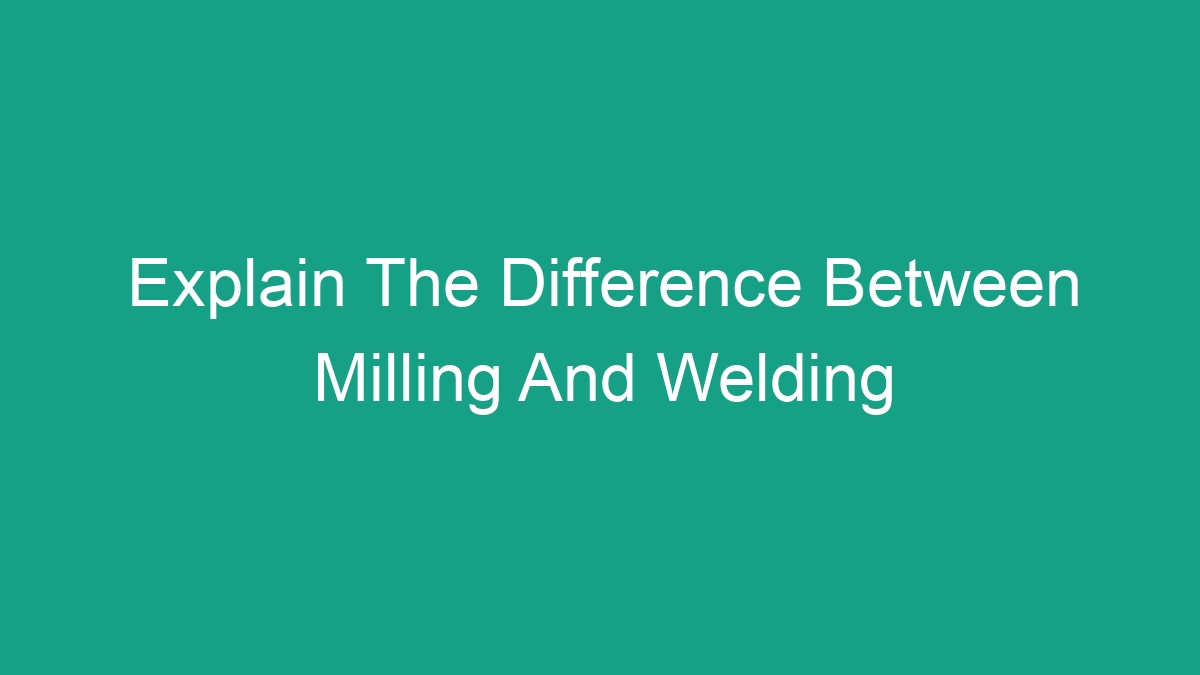
In the world of manufacturing and metalworking, there are various processes and techniques used to shape and fabricate metal. Two of the most commonly used methods are milling and welding. While both are essential in the production of metal products, they serve different purposes and have distinct differences. In this article, we will explore and explain the key differences between milling and welding processes.
Milling
Milling is a machining process that involves the use of a rotary cutter to remove material from a workpiece. This process is commonly used to create complex shapes and features on metal, plastic, and other materials. There are several types of milling processes including face milling, end milling, and peripheral milling, each of which has its own specific applications.
Key points about milling:
– Milling involves the use of a rotating cutting tool to remove material from a workpiece.
– It is used to create precise and complex shapes on various materials.
– The process can be performed using different types of milling machines such as vertical mills, horizontal mills, and CNC mills.
– Milling is widely used in industries such as automotive, aerospace, and manufacturing for the production of parts and components.
Welding
Welding, on the other hand, is a fabrication process that involves the joining of two or more pieces of metal through the application of heat and pressure. The goal of welding is to create a strong and durable bond between the materials being joined. There are several different welding techniques including arc welding, MIG welding, TIG welding, and oxy-acetylene welding, each with its own advantages and applications.
Key points about welding:
– Welding involves melting and fusing two or more pieces of metal together.
– It is used to join metal components in a variety of industries such as construction, automotive, and shipbuilding.
– The process requires the use of a welding machine, filler material, and protective gear such as helmets and gloves.
– Welding can be used to create permanent joints between metal pieces.
The Differences Between Milling and Welding
While both milling and welding are essential in metalworking, they serve different purposes and have distinct differences in terms of their processes and applications.
Process:
– Milling involves the removal of material from a workpiece using a rotating cutting tool, while welding involves fusing two or more pieces of metal together using heat and pressure.
Purpose:
– Milling is used to shape, cut, and create precise features on a workpiece, while welding is used to join and fabricate metal components.
Equipment:
– Milling requires the use of a milling machine and rotating cutting tools, while welding requires the use of a welding machine, filler material, and protective gear.
Applications:
– Milling is commonly used in industries such as manufacturing, aerospace, and automotive for the production of parts and components, while welding is used in industries such as construction, automotive, and shipbuilding for joining and fabricating metal components.
Frequently Asked Questions (FAQ)
What are the main differences between milling and welding?
– The main difference between milling and welding lies in their processes and purposes. Milling involves the removal of material from a workpiece using a rotating cutting tool, while welding involves fusing two or more pieces of metal together using heat and pressure.
What are the key applications of milling and welding?
– Milling is commonly used in industries such as manufacturing, aerospace, and automotive for the production of parts and components, while welding is used in industries such as construction, automotive, and shipbuilding for joining and fabricating metal components.
What equipment is required for milling and welding?
– Milling requires the use of a milling machine and rotating cutting tools, while welding requires the use of a welding machine, filler material, and protective gear such as helmets and gloves.
Can milling and welding be used together in the fabrication process?
– Yes, milling and welding can be used together in the fabrication process. For example, after milling a workpiece to create precise features, welding can be used to join the milled components together to create a complete assembly.
In conclusion, while both milling and welding are essential in the metalworking and manufacturing industries, they have distinct differences in terms of their processes, purposes, and applications. Understanding these differences is crucial for professionals in these fields to effectively utilize these processes in their production activities.



